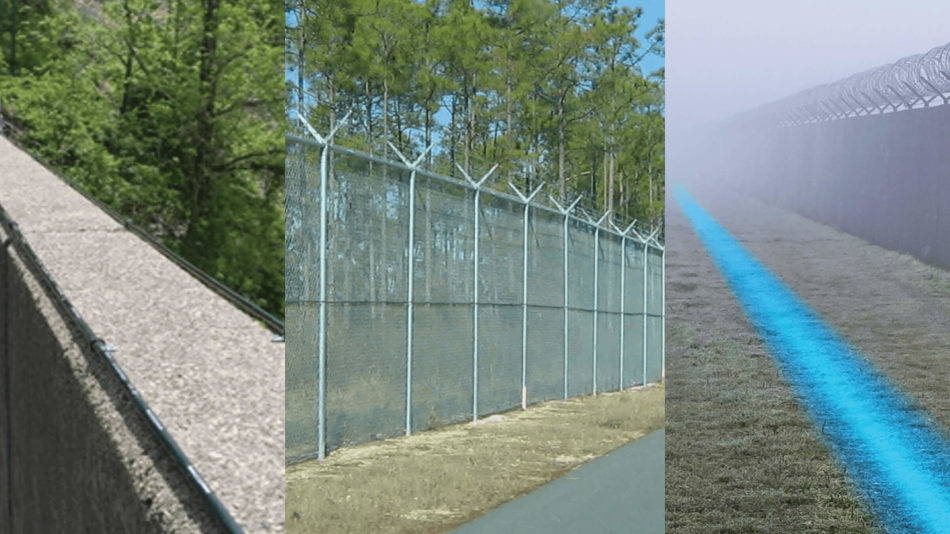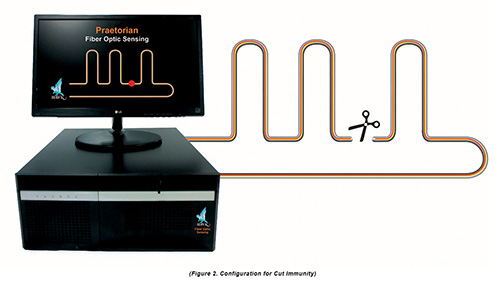Improve Your Security With Advanced Fiber Optic Safety Systems
In an age where protection is critical, sophisticated fiber optic safety and security systems provide an engaging remedy for boosting safety across different environments. These systems not just boast exceptional bandwidth and speed for high-resolution surveillance however likewise supply exceptional durability versus exterior interferences. As companies increasingly seek dependable methods to shield their assets, the integration of cutting-edge modern technologies like AI and IoT within fiber optic structures increases crucial questions concerning their performance compared to traditional systems. What effects do these advancements hold for future safety and security steps?
Benefits of Fiber Optic Safety And Security
Taking advantage of the advantages of fiber optic technology significantly boosts safety and security systems across various applications. One of the key advantages is the enhanced bandwidth ability, permitting the transmission of big amounts of information at broadband. This is particularly important for real-time video clip monitoring, where high-resolution feeds can be sent without latency, guaranteeing prompt action capabilities.
Furthermore, optical fiber display exceptional resistance to electromagnetic interference, which is crucial in environments with possible signal disruptions. This reliability makes certain constant efficiency in essential safety operations. Moreover, fiber optic wires are less vulnerable to tapping and unauthorized accessibility compared to traditional copper electrical wiring, therefore enhancing information honesty and privacy.
An additional significant advantage is the longevity of fiber optic systems; they are much more resistant to ecological variables such as wetness, temperature changes, and harsh compounds. This durability converts to lower upkeep expenses and longer life-spans for safety and security setups.
Finally, the light-weight nature of fiber optic cables assists in less complicated setup and transmitting, particularly in complicated frameworks (fiber optic security system). Eventually, the assimilation of fiber optic technology right into security systems not only reinforces protection actions but also optimizes functional performance
Trick Features to Consider
When examining fiber optic protection systems, numerous essential attributes must be considered to ensure ideal efficiency and performance. Initially, examine the system's discovery range and sensitivity; a substantial range permits keeping track of huge locations, while high sensitivity ensures that also minor disruptions are detected promptly.
Following, consider the assimilation capacities of the system. A fiber optic safety system should flawlessly interface with existing security procedures such as electronic cameras and alarm systems, creating a cohesive safety network.
Sturdiness and environmental resistance are additionally important attributes. Guarantee that the system is designed to withstand severe climate condition and possible physical dangers, as this will certainly prolong its functional lifespan.

Lastly, check out the scalability of the system. A durable fiber optic security system should be conveniently expanding to suit future requirements without substantial overhauls. By very carefully taking into consideration these functions, you can select a fiber optic safety solution that enhances security and security in your setting.
Installment Process Review
To successfully apply a fiber optic protection system, a methodical installment process is vital. This process begins with an extensive website assessment to identify the specific security requirements and to identify optimal locations for fiber optic cable televisions and protection tools. Following my site this analysis, the setup team will certainly create a comprehensive plan, consisting of cable television pathways, essential devices, and conformity with local policies.
Following, the installation entails laying the fiber optic cables, ensuring they are secured from ecological variables and physical damages. Appropriate handling strategies are important, as fiber optic wires are sensitive and can be quickly damaged. After the cabling is installed, connectors and terminations are diligently finished to ensure signal integrity.
The subsequent phase is composed of mounting security tools such as cams, activity detectors, and security system, all incorporated with the fiber optic network. Strenuous testing is carried out to verify that all parts are working appropriately and to ensure optimum performance.

Contrasting Fiber Optic to Standard Systems
The development of safety and security my sources technology has led to significant advancements in the contrast in between fiber optic systems and typical copper-based systems. Fiber optic systems utilize light to send information, providing superior data transfer and speed contrasted to their copper counterparts. This results in improved information transmission abilities, making fiber optics suitable for high-resolution video clip monitoring and real-time monitoring.
In addition, fiber optic cables are immune to electromagnetic disturbance, minimizing the chance of signal deterioration caused by external factors. This particular guarantees regular efficiency, even in tough atmospheres. On the other hand, conventional copper systems are much more at risk to interference, resulting in potential susceptabilities in security applications.
Longevity is an additional benefit of fiber optic systems. They are much less prone to damage from environmental aspects such as dampness and temperature fluctuations, which can compromise copper electrical wiring. Fiber optics are lighter and thinner, permitting for simpler installment and lowered physical footprint.
Nonetheless, traditional systems have a tendency to have reduced first expenses, making them eye-catching for budget-conscious projects. While fiber optic systems may call for a greater upfront financial investment, their long-lasting advantages-- such as reduced maintenance expenses and better dependability-- frequently surpass the first expenditure, positioning them as a superior choice for modern-day safety and security needs.
Future Fads in Safety Modern Technology
Arising trends in safety modern technology are poised to transform the landscape of surveillance and danger discovery - fiber optic security system. As organizations significantly face innovative threats, advancements such as expert system (AI) and equipment knowing (ML) are ending up being integral to security systems. These modern technologies boost the ability of fiber optic systems by allowing real-time data analysis, identifying abnormalities, and automating responses to prospective violations
In addition, the assimilation of the Net of Things (IoT) is revolutionizing safety structures. IoT gadgets can go right here give thorough situational awareness and assist in seamless interaction in between various security components. This interconnectedness enables for much more effective tracking and faster case reaction times.
Biometric verification is additionally obtaining momentum, providing a higher level of protection through one-of-a-kind physical qualities. As this modern technology progresses, it is most likely to be incorporated right into fiber optic systems for improved gain access to control.
Final Thought
In verdict, advanced fiber optic protection systems represent a considerable advancement in security and monitoring modern technology. The transition from conventional systems to fiber optic remedies shows a growing pattern in the direction of a lot more reliable and efficient safety and security steps in a progressively complex technical landscape.